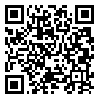

BibTeX | RIS | EndNote | Medlars | ProCite | Reference Manager | RefWorks
Send citation to:
URL: http://mmi.aui.ac.ir/article-1-522-en.html
Karbandi is a common structural and covering pattern for arched surfaces in Persian architecture, which is rooted in the precise methods of descriptive geometry. These methods, due to their strict geometry, do not have much flexibility and have been used only in specific fields in Iranian architecture. Therefore, the questions arise: what are the limitations and requirements of common drawing methods of Karbandi design? And by discovering these limitations and requirements, how can Karbandi applications be expanded? This research aimed at answering the mentioned questions. For achieving the first purpose the geometry of Karbandis of Tabriz historic bazaar, as the salient samples in Persian architecture, have initially been analyzed. Then, according to the found limitations and requirements, it has investigated the possibility of Karbandi design on innovative and novel bases. This research has been carried out through a logical argumentation method by means of direct observation, corpus analysis and computer modeling to present solutions to increase the variety of Karbandi fields. The results of the research suggest that the conditions and adequate requirements for the geometric execution of an n-lateral Karbandi on the bases of regular or irregular quadrilaterals can be summarized in the three categories as follows:
1. The two facing angle of the base quadrilateral must be complementary.
2. All the four angles resulting from drawing either of the diameters must be a multiple of the result of dividing 180 (degrees) by the number of sides .
3. The Shamseh of Karbandi must be formed inside the base. The latter condition is met only when the center of the circumscribing circle is located inside the base.
It was also determined that apart from rectangular and regular bases, the geometry of some types of Karbandi can also be accurately implemented in a group of irregular bases. Finally, according to the above conditions, a method was figured out through which it is possible to accurately calculate and draw the Karbandi geometry in accordance with the base geometry with the least error rate possible.
| Rights and permissions | |
 |
This work is licensed under a Creative Commons Attribution-NonCommercial 4.0 International License. |



